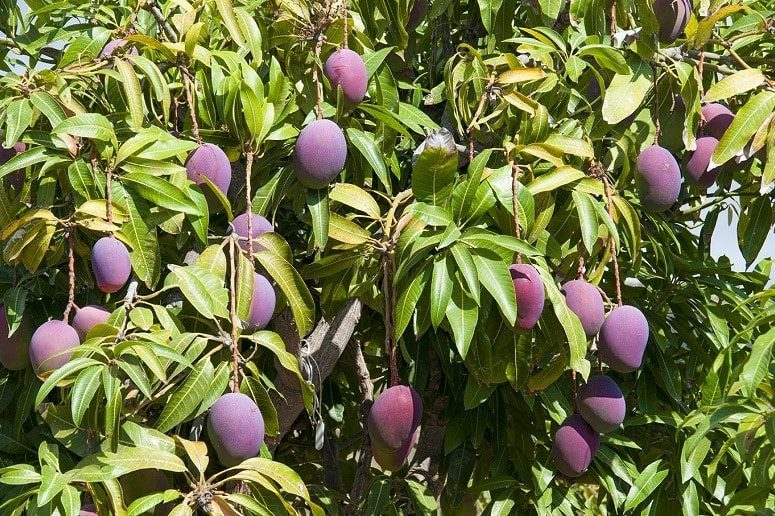
Yes! We got mangoes in Gran Canaria!
Share
Mangoes are delicious tropical fruits that can be enjoyed in many ways. They are rich in vitamin C, fiber, and antioxidants, and have a sweet and juicy flesh.
But did you know that you can also find mangoes in Gran Canaria, one of the Canary Islands in Spain?
Gran Canaria is home to many exotic plants and fruits, such as bananas, papayas, avocados, and mangoes. Mangoes were introduced to the island in the 19th century from India and Africa, and have adapted well to the subtropical climate and volcanic soil.
Mango season in Gran Canaria starts in late summer and can last till winter. The most common varieties of mangoes grown on the island are Osteen, Kent, and Keitt. These mangoes have reddish-purple skin and a citrus aroma. They are often eaten fresh for breakfast or as a snack, but they can also be used to make juices, smoothies, salads, jams, desserts, and even cocktails.
If you want to taste the best mangoes in Gran Canaria, you can visit one of the many local markets or farms that sell them. You can also find mango products in some shops and restaurants.
If you love mangoes, you might be curious about how the mango tree grows, the different variants of mango that exist and how to recognize a good mango. Mangoes are not only delicious but also healthy and nutritious. They can help boost your immune system, improve your digestion, lower your cholesterol, and prevent infections. They are also good for your skin and hair, as they contain vitamin A and beta-carotene.
The mango tree is a tropical evergreen tree that belongs to the Anacardiaceae family. It can grow up to 30-40 meters tall and has a dense canopy of dark green leaves. The mango tree produces small white flowers that are pollinated by insects and birds. The flowers develop into oval-shaped fruits that vary in size, shape, color and flavor depending on the variety.
There are hundreds of varieties of mangoes in the world, but the most popular ones are:
- Alphonso: This is considered to be one of the best mangoes in terms of taste and aroma. It has a deep yellow skin with a reddish tinge and a sweet and juicy pulp. It is mainly grown in India and is available from April to June.
- Haden: This is a large and round mango with a yellow skin and red blush. It has a firm and fibrous flesh that is mildly sweet and aromatic. It is widely cultivated in Florida and Mexico and is available from May to July.
- Kent: This is a large and oval mango with a green skin and yellow spots. It has a smooth and juicy flesh that is sweet and rich in flavor. It is grown in Florida, Mexico, Ecuador and Peru and is available from December to February.
- Tommy Atkins: This is a medium-sized and oblong mango with a red and green skin. It has a firm and fibrous flesh that is mildly sweet and tangy. It is one of the most common varieties in the market and is grown in Florida, Mexico, Brazil and Israel. It is available from March to July.
To recognize a good mango, you need to look at its color, smell, feel and taste. A ripe mango will have a vibrant color that indicates its variety. It will also have a sweet and fruity smell that comes from the stem end. A ripe mango will feel slightly soft when you gently squeeze it, but not mushy or bruised. A ripe mango will taste sweet and juicy with a hint of acidity.
Written by Flavio de Stefano